Learning to plant irises in open ground and properly care for them
"Iris" - this is how the people affectionately call irises, planting and caring for which is not too laborious, but will require knowledge of the characteristics of the flower. Their unpretentiousness and ability to adapt to external conditions is evidenced by the wide area of distribution of plants and more than two thousand years of history of their cultivation.
Bright cockerels are old favorites of summer residents and gardeners, who have become regulars in flower beds and flower beds. There are about 700 of their varieties: large and dwarf, rhizome and bulbous, simple and double. The color palette of their petals is so rich that it fully justifies the name of the flower, leading from the name of the ancient Greek goddess of the rainbow - Iris.
Popular varieties of irises
Botany subdivides all the variety of irises into 2 large groups: bearded and non-bearded. This classification is based on the shape of the flower. The lower petals of bearded irises are covered with soft, strongly protruding bristles that usually differ in color or shade, collected at the base in a "beard", which is why they are called that. These plants are also known as the northern orchids. They are very popular with gardeners and come in a variety of varieties, including tall and dwarf, medium and curb, small-flowered and table irises.
Most often, the gardens are decorated with the Germanic species of bearded cockerels. Its large flowers bloom in May and June, and the rhizome has medicinal properties and can be eaten. It does not impose special requirements on the composition and quality of the soil, therefore it is grown in open ground everywhere. The German Iris is the progenitor of the bearded irises.
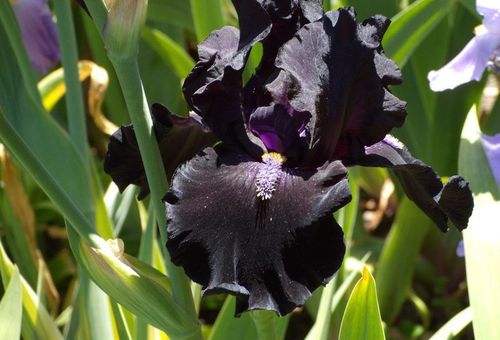
The second group includes all other varieties that do not have a bristly growth on the lower petals. The most widespread in it are Siberian, Japanese, Californian, marsh species of cockerels. These flowers differ not only in appearance, but also in breeding conditions. Siberian iris will become a bright accent on the flowerbed, planting and caring for which will cause a minimum of trouble. It blooms magnificently every year, is not capricious and hardy, resistant to frost, drafts, and many dangerous diseases, including bacteriosis. Its petals can be painted in a wide range of shades from pearl white to inky purple.
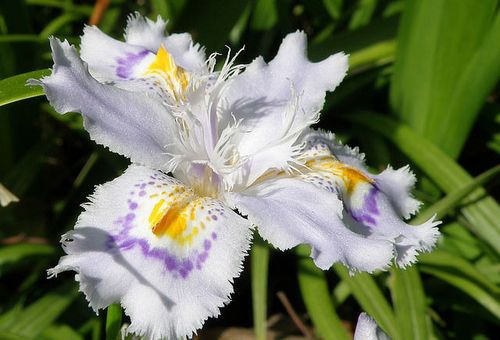
The Japanese type of irises is distinguished by very large (up to 25 cm in diameter) flowers that look like an orchid and are devoid of aroma. Thanks to the labor of breeders, multi-petal and terry varieties of it were obtained, which can be bred in open ground, but only taking into account their weak frost resistance. Marsh iris is extremely unusual. Only moist soil is suitable for its cultivation. Its cultivated varieties are most often used to decorate artificially created reservoirs.
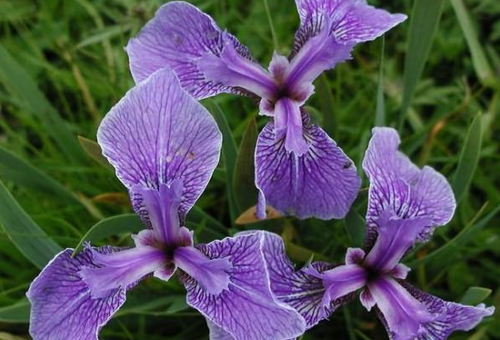
Choosing a site and time for planting
The successful cultivation of irises is impossible without regular division of the bush and subsequent transfer to a new site. It is held every 3-4 years. Many gardeners believe that irises should be transplanted in the summer after the flowering period is over. Then the plants will have enough time to take root in a new place, which will make it easier for them to winter. In fact, the optimal time for the procedure depends on the climatic characteristics of the area. It can be done equally successfully in the spring and even in the fall, if the warm days are long.
For bearded irises, it is better to choose an area in the country that is well lit in the morning and protected from cold winds. Slopes and hills are ideal for them: they are quickly released from melt water and provide the drainage necessary for plants. The marsh type of irises should be planted correctly in areas with high soil moisture. It can be close to water or even a wetland.
Rich soil is preferred for all varieties of flowers. Soil with a meager supply of nutrients requires preliminary preparation. In the spring they add to it
- humus soil or compost;
- fertilizers high in potassium and phosphorus.
Cannot be used for enrichment of soil for irises and manure. Acidic soil is neutralized with dolomite flour, chalk or wood ash. The loam is diluted with peat and sand. The introduction of clay soil into it will help to achieve optimal soil quality on a sandy area. Japanese iris is especially demanding in terms of soil composition. It should be slightly acidic and completely free of lime. It is important to maintain a moderate soil moisture throughout the flowering period.
Advice! Before planting, the land should be treated with fungicide and herbicides. In the future, this will save time in weed control and prevent plant diseases.
Features of spring planting
Most representatives of the iris genus have powerful rhizomes that extend horizontally into the soil. During the growing season, flowers accumulate nutrients in them for the next development cycle. Such are the Germanic, marsh and numerous dwarf irises. Some plant species, such as Dutch or net, develop from bulbs. Therefore, the answer to the question of how to plant irises depends on the biological characteristics of the selected variety.
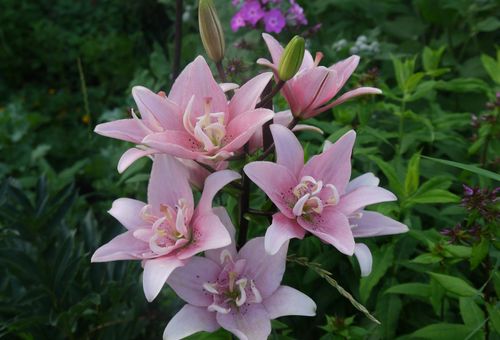
To correctly carry out the procedure and avoid problems with flower cultivation, following a few tips will help:
- If planting or transplanting plants is carried out in the spring using rhizomes or corms that survived winter storage or purchased in a store, they are pre-treated with growth stimulants.
- The planting material is carefully examined, removing areas with signs of rot and shortening too long roots with a sharp knife, after which they are kept in a weak solution of potassium permanganate for 20 minutes.
- The correct planting of irises is done on the sand. It is poured with a slide into a shallow hole. The rhizome of the flower is placed on the resulting mound, it should be located horizontally. Gently spreading the roots over the sand, add soil to the hole. They complete the planting of plants in open ground with abundant watering.
- German iris and dwarf varieties, which are propagated by dividing the rhizome, are demanding in terms of hole depth. So that the flowers do not suffer from rot, they are not completely buried. Part of the rhizome should protrude from the soil. Failure to comply with this rule is fraught with the fact that the plant will not bloom.
- Japanese and marsh iris are hygrophilous, so they need to be planted a few centimeters deeper than the soil surface, additionally mulching the beds. You can use peat or dry needles for this.
- Dutch, net and other types of bulbous irises are planted to a depth of three diameters of corms.
- Tall flowers are placed at least 50 cm apart. Dwarf varieties can be planted more often - after 15-20 cm.
Autumn planting of irises
Planting irises outdoors is often done in late summer or autumn. The optimal period for her is from August to the last days of September, when flowering has already ended, and frost is still far away. Some plant species, such as Japanese, are preferable to replant at this time. It is also important to consider the characteristics of the variety. Dutch iris is placed in the soil earlier - in early August, because its bulbs are afraid of cold snaps.In general, the later a plant is transplanted, the more difficult it will be for it to settle down in a new place. They follow the same rules as in the spring.
Reproduction of rhizome irises occurs according to the following scheme:
- The bush is removed from the soil with a pitchfork and gently freed its roots from excess soil.
- The plant is examined and divided into links with a leaf blade.
- If the roots of the flower are long, they are shortened.
- A sharp knife is used to remove areas with mechanical damage or signs of disease.
- The rhizomes are immersed in a concentrated solution of potassium permanganate and kept in it for about 2 hours. This will help disinfect them.
- After disinfection, parts of the bush are laid out in a sunny place for 5 hours so that they dry well before planting.
A characteristic feature of irises is the rapid horizontal growth of their rhizomes, because of which they often look out of the ground. In warm weather, the flowers do not suffer from this, and in winter they can freeze out. Therefore, in the fall, the beds with plantings are covered first with soil, and then with an 8-10 cm layer of sand or peat. In the conditions of severe and little snowy winters, dry leaves are poured on top or spruce branches are laid. In spring, the plants are carefully freed from protection.
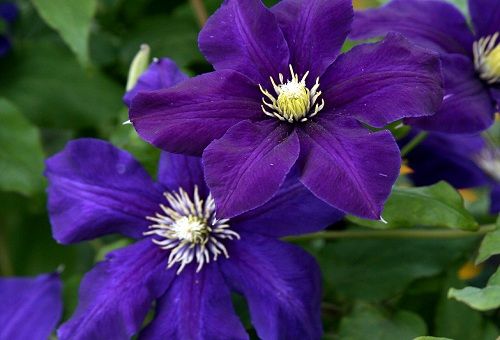
Japanese iris will require more attention. The main difficulty in growing it is to ensure dry wintering. You need to take care of it in the autumn by covering the flowers with a layer of withered oak foliage and securely fixing a plastic wrap over it. In this case, the roots of the plant should not dry out, otherwise it will die.
Advice! Planting them in containers will help you save time and effort when breeding Japanese irises. In the warm season, containers with flowers are put out on the street, and on the eve of winter they are removed indoors.
How to take care of irises
Good outdoor iris care consists of 4 key points:
- watering;
- top dressing;
- weeding;
- regular transplant.
When plants are actively growing in bud, they need a lot of moisture. Therefore, it is correct to water them often and abundantly. The rest of the time, natural precipitation is enough for them, so the soil is moistened less often, guided by the state of the earth near the roots. If it is very dry, you can proceed to the next watering. The cultivation of irises involves regular inspection of the plantings. If withered flowers appear, they are cut off. So they will not pull strength from the plant to form unnecessary seeds and will not lure possible pests.
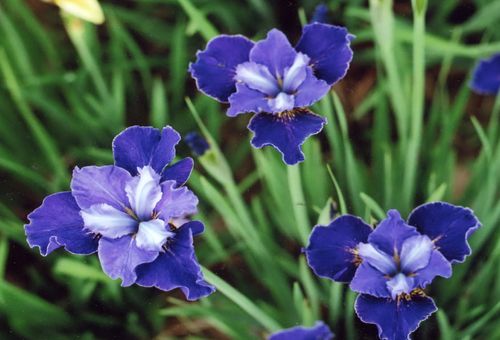
With regard to fertilizing, flowers will not cause problems. Usually, they are satisfied with the fertilizers that are applied to the soil in spring during its preparation for planting. If irises look weak and develop slowly, they will be helped by enriching the soil with potassium-phosphorus compounds. It is carried out at the stage of plant growth, watering them with a solution of the drug under the root. When irises are in bloom, feeding them is contraindicated.
Periodically, you will have to weed the plantings. Weeds are removed manually. It is impossible to use gardening tools for this, since the rhizome of plants is located almost on the surface of the soil and there is a high risk of damaging it. Several times during the growing season, the soil is still loosened, but very carefully. Dutch and net irises require more complex maintenance. After the plant has faded, its corms are carefully dug up and laid out in a dry place, where they are kept until autumn planting.
Reproduction methods
Depending on the iris variety, its propagation can be carried out
- planting seeds;
- daughter bulbs;
- dividing the rhizome.
While growing flowers from seeds is not difficult, the process will take a lot of attention and take years. Therefore, irises are bred mainly in a vegetative way, in which the planted delenki are delighted with buds already next spring. He has only one drawback - the inability to get new varieties. Their breeding is based on the use of seeds of re-pollinated plants.
The beauty and variety of forms of irises fascinate, and they bloom for a long time. From May to June, they bloom their large bright buds, resembling beautiful orchids and enchanting with a pleasant delicate aroma. Among the numerous plant varieties, there are those that bloom twice - in spring and autumn. They are good not only in a flower bed, you can also make exquisite bouquets from them that are suitable for all occasions: a wedding celebration, a friend's birthday, a professional holiday.
Few flowers can compete with irises for the love of gardeners. Planting and growing irises does not require much experience, even beginners can handle it. It is worth giving them enough attention and care, observing simple recommendations for planting and care, and the result in the form of a beautiful flower bed, on which huge multi-colored butterflies seem to have sat down, will pay off all the efforts.
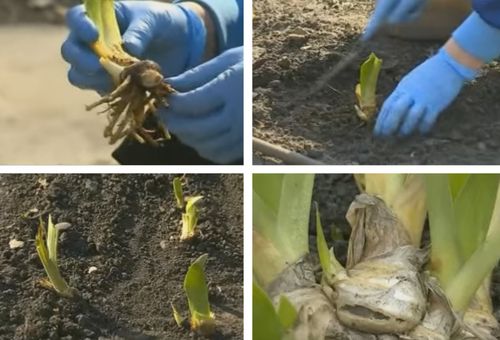
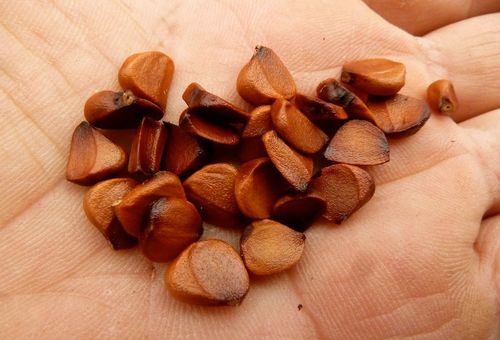
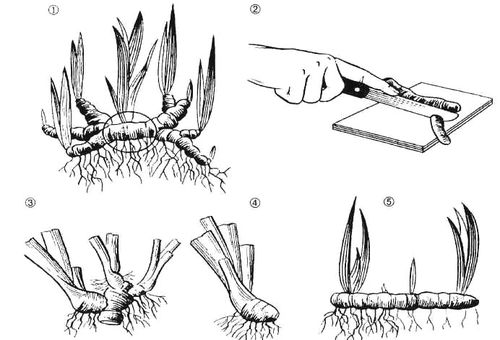
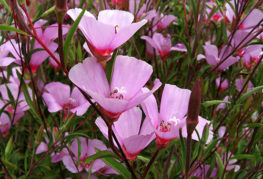
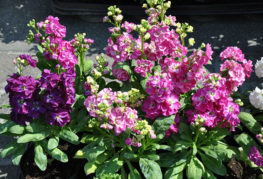
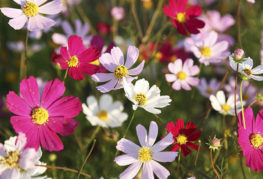


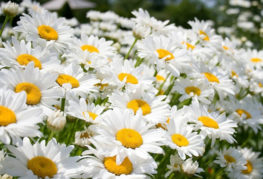
and will be published shortly.